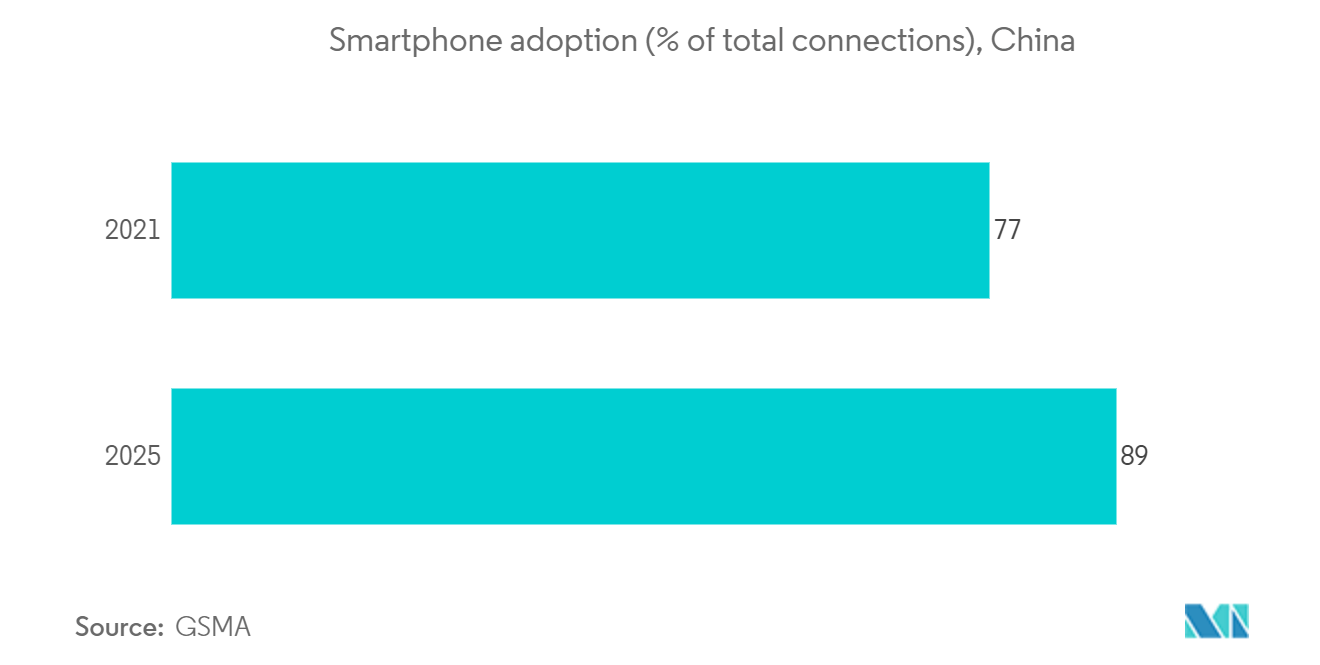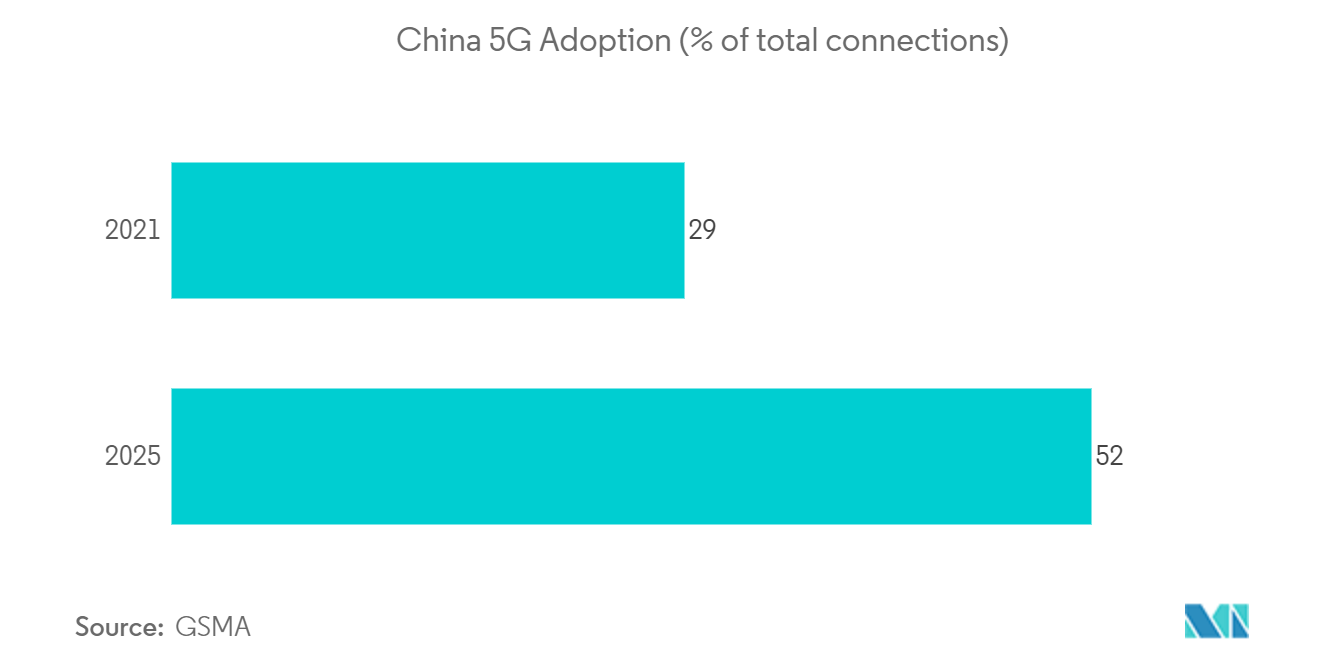Market Trends of Chinese Gaming Industry
Mobile Games Occupies the Largest Market Share
- The mobile games segment of the market is expected to witness significant demand during the forecast period due to the country's growing mobile population of gamers. The majority of players are concentrated in tier-2 cities of China, such as Chengdu and Wuhan. Further, according to SensorTower listing, the TOP100 list includes 42 Chinese mobile gaming manufacturers. The total revenue of the 42 Chinese mobile gaming publishers is USD 1.88 billion. This accounts for 38.3% of the total revenue of the TOP100 mobile game publishers globally for September this year. Popular brands like Tencent and NetEase topped the charts, while other familiar names included Lilith Games, FunPlus, Lingxi Games, etc.
- Game publishers and developers are catering to emerging market consumers by releasing "lite" versions of games that can run on phones with less processing power (i.e., cheaper phones). This broadens the reach of the specific title by making the game more accessible to consumers who might not be able to afford the fastest, best mobile phones.
- Game R&D and operations, especially for mobile games, are expected to become more dependent on the cloud. Also, game server hosting service for Chinese online/mobile games with a presence outside China is trending. Mobile gaming is dominant and is an opportunity for cloud hosting services, like Ucloud, since China is the leader in terms of smartphone sales, as well as production.
- Further, the affordable mobile internet and the advent of advanced mobile infrastructure, such as the upcoming 5G technology, are expected to \fuel the country's mobile gaming market.
- As per GSMA, 1.22 billion people were registered to mobile services last year, accounting for about 83% of the region's population. Moreover, 52% of Chinese connections will be 5G by 2025. Between 2020 and 2025, 88% of operator expenditure will be invested in 5G, amounting to USD 116.16 billion. In the last year, mobile technology and services contributed 5.6% of regional GDP, amounting to roughly USD 900 billion in economic value added.

Rise of Cloud Gaming and 5G to Drive the Market
- Cloud gaming is expected to be the fastest-growing sector in the game industry in China; it has accumulated significant momentum. For instance, CloudUnion reportedly has a subscriber base of 20 million, which signifies cloud gaming's bright prospects in the country. The strong compatibility of cloud gaming with IPTV and the existing technical constraints on the flow demonstrates the game's potential market on-demand to households in China.
- Some investments and collaborations to extend and expand gaming services in China are expected to fuel the market demand. For instance, Kalydo, one of the prominent gaming service providers and Shanghai-based Chi Yu games, launched the Speed Kingdom, a new generation of 3D MMO racing online games. By leveraging Kalydo's cloud game service, players can initiate the gaming process concisely without needing heavy downloads and lengthy installation processes.
- Recently, China passed a law restricting spending limits for those under 18 on gaming to between USD 28 to USD 57 a month. The regulation has been given to address "poor academic performance across a broad swath of society" amongst youths and tackle video game addiction issues. The spending limit focuses on microtransactions and DLC (Downloadable content), and with the adoption of the cloud, the subscription-based model caters to new growth opportunities.
- Further, technologies such as 5G are also driving the mobile-based VR gaming market in the region. For instance, in July last year, Migu Co Ltd, a China Mobile subsidiary that delivers digital content and services, ramped up its efforts to encourage the growth of the cloud gaming industry. Migu launched a new plan to distribute better cloud gaming content in collaboration with Xiaomi Corp, a Chinese cloud service provider Kingsoft Cloud, and other partners.
- Moreover, as per GSMA, the total number of 5G connections in the last year was 488 million, which is expected to reach 892 million by 2025.


